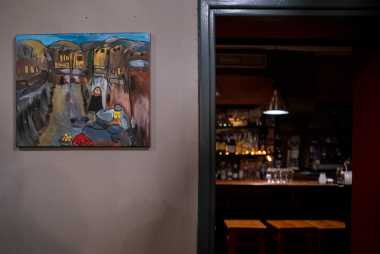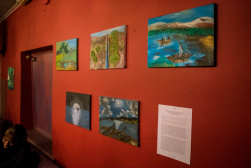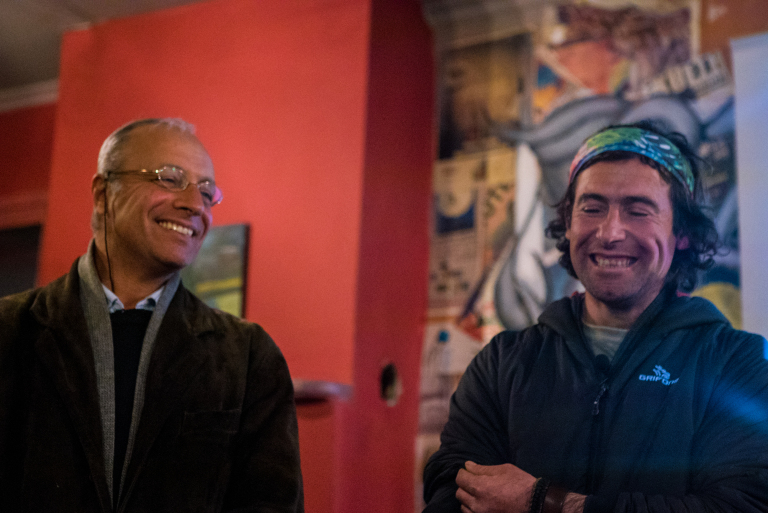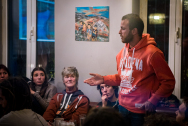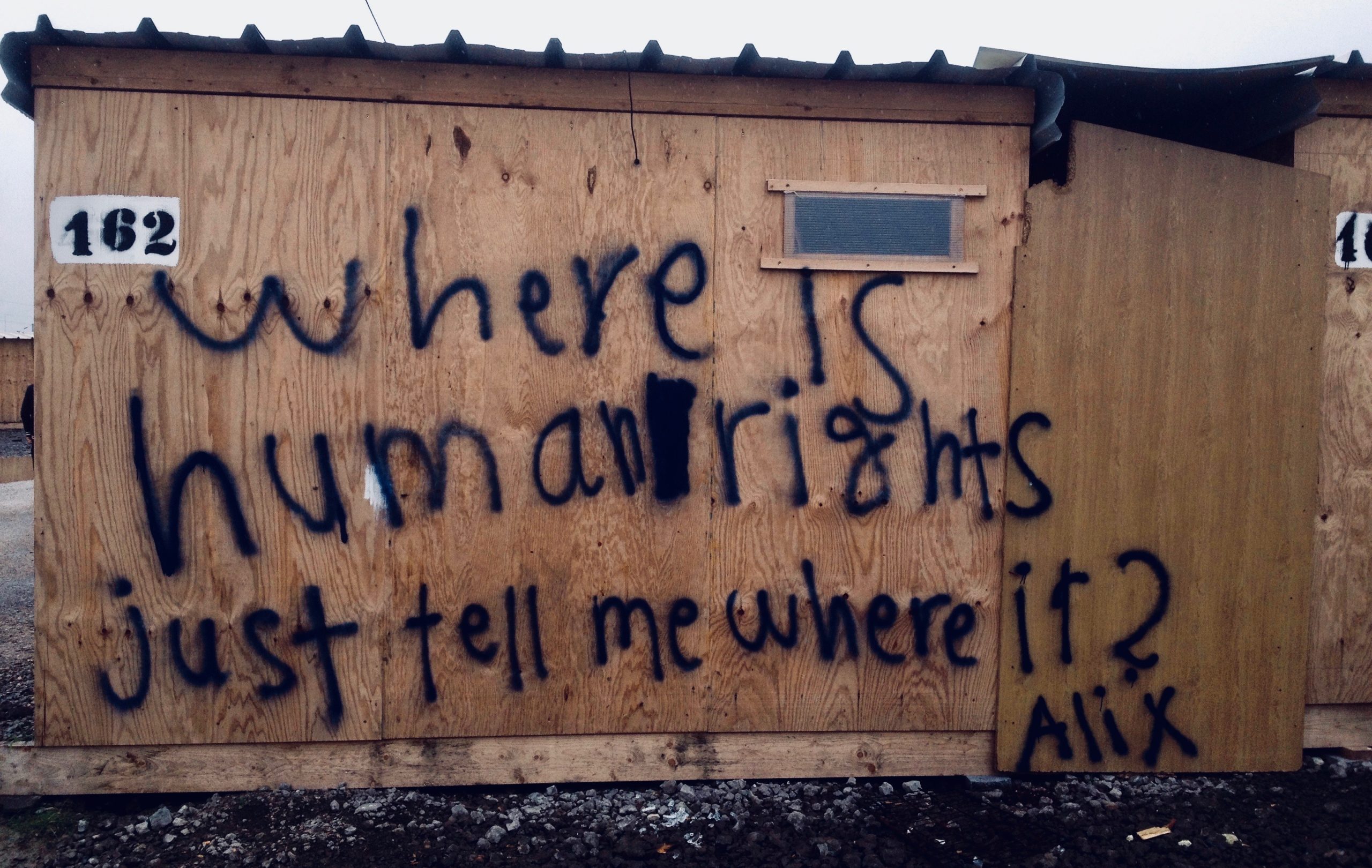
Toni is a prolific artist from Syria who I collaborated with extensively on a number of creative projects. I commissioned Toni to paint the external walls of the Hammam and asked a young photographer in the camp to take photographs of the commission.
I photographed Toni’s paintings and created a blog with him. The blog featured and contextualised the work in the way he wanted to present them. Self determined online representation was so important in a context that was so disempowering.
I showed the blog to various venue owners in Ioannina in order to secure an exhibition venue for him.
I encouraged Toni to exhibit his paintings of Ioannina in order to reverse the lens of the outsider and intrigue locals to see their city through Toni’s eyes.

Art is Life exhibition
I liaised with the University of Ioannina to organise a solo show for Toni in Ioannina. I curated Toni’s Art is Life exhibition and we invited over 30 Greek artists, writers, teachers, professors and university students. NGO and independent refugee camp volunteers (including the incredible Habibi Works team) came to support Toni and Mohammed Ali.
Art is Life event
Toni gave a speech and Mohammed Ali (who had printed photographs of Toni’s Hammam commission) also spoke about life in camp. Stathis from the university and I gave talks that opened dialogue with Ioannina residents and invited them to participate with the engagement programs I was developing.
Toni’s artist statement
Drawing and painting is a very important part of my life. It elevates you and transports you. I started to learn how to draw when I was 15 in Aleppo Syria.
I am always striving to improve my work and it has become increasingly expressive. I don’t have a precise style or specific type or category of painting.
My inspiration is drawn from my imagination and nature. I am constantly diversifying my style so that I am always challenged so that the journey is always new and so that I don’t get stuck on one particular subject or theme or technique.
The conditions in Syria didn’t allow me to show my work so the first time I exhibited my work was in Lebanon in a small gallery.
The idea that art is not essential is false because art is more than a way to help, art is life. I am a humble person and I adapt to the context I’m in. The refugee camps are just a stage in our lives and we are not defined by the camps. Our lives are not just about milk and bananas.
I am a humble person and I adapt to the context I’m in. I oppose war, I oppose oppression and drawing is the way for me to raise my voice. We are all human, we are souls and we love life. I have hope in life.
Refugee Camps
1951 Refugee Convention
Ongoing detention of refugees is contrary to the objectives of the 1951 Refugee Convention. The longer a camp exists the lower the annual international funding and the greater the implications for human rights are.
The 2016 crisis
In 2016 people seeking sanctuary and safety became trapped in the middle of a European political stalemate. In the spring of 2016 I went to a refugee camp in Dunkirk. Here I learned about the situation in Greece which was a crisis point
Faneromeni Camp
In the summer of 2016 I travelled to Epirus, Northern Greece to volunteer in a closed camp for Yazidi people. This was set up by the UNHCR but there were very few support agencies on the ground.
I worked with about 300 women in this camp collaborating with a group of seamstresses to co-create a textile and clothes making project. My work was noted by an NGO working in a neighbouring camp. I was invited to work with them at Katsikas camp so when the Yazidi women I worked with were relocated I went to work there.
Katsikas Camp
In 2016-17 I established a creative engagement program, exhibition and outreach program in collaboration with residents from Katsikas refugee camp, Greece.
At Katsikas camp there were between 300-650 residents from Syria, Lebanon, Afghanistan, Iraq. I collaborated with residents in the camp to establish a creative engagement program.
Communities of Practice
I co-created spaces inside the camp with residents and developed broader engagement projects that connected people to the city and agitated for integration through organising cultural projects and events.
These events and projects created networking opportunities between Greek locals and refugee residents, paved the way for self-organisation, cultural integration and challenged ghettoization.
My connection to Lighthouse Relief Hellas and CalAid gave me official permission to work in the camps, access to volunteers and a €200 monthly stipend (which I used on materials). My work was self-funded, self motivated and self generated.













